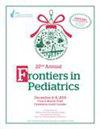儿童胰腺肿瘤的外科治疗:15 年来单机构的经验
IF 2.1
3区 医学
Q2 PEDIATRICS
引用次数: 0
摘要
简介:胰腺肿瘤在儿童中非常罕见,很少有研究报道小儿胰腺肿瘤的手术效果。在这项回顾性单中心研究中,我们回顾并分析了 2007 年 1 月至 2022 年 12 月期间在 Severance 儿童医院接受小儿胰腺肿瘤手术的患者数据。结果 共有28名患者接受了胰腺肿瘤手术治疗,中位年龄为11.7岁(0.4-17.8岁)。在良性肿瘤中,最常见的组织学诊断是实性假乳头状瘤(SPN),有 20 例(71.4%)。其次是粘液性囊肿、网状母细胞瘤、假性囊肿、重复囊肿和良性囊肿,各占一名患者(3.5%)。恶性肿瘤方面,胰母细胞瘤、实性假乳头状癌和恶性嗜铬细胞瘤各占一名患者(3.5%)。肿瘤位置包括头部 4 例(14.2%)、身体 7 例(25%)和尾部 16 例(57.1%),弥漫性 1 例(3.5%)。最常见的手术切除范围是远端胰腺切除术,有 22 名患者(78.5%)接受了这种手术,其次是保留幽门的胰十二指肠切除术,有 2 名患者(7.2%)接受了这种手术;保留十二指肠的胰腺切除术、中央胰腺切除术、肿瘤去核术和近全胰腺切除术各有 1 名患者(3.5%)接受了这种手术。总体而言,4 名患者术后出现 B 级或 C 级胰瘘,1 名患者术后因出血无法控制而死亡。平均随访时间为 6.1 年(范围:1-15.6 年),期间未发现手术后对生长有明显影响。在 20 例 SPN 患者中,4 例(20%)发生肿瘤破裂,其中 2 例出现肿瘤复发。小儿胰腺肿瘤的手术治疗似乎安全有效。然而,考虑到这些患者的长期预后,必须根据肿瘤的位置确定适当的手术切除范围。本文章由计算机程序翻译,如有差异,请以英文原文为准。
Surgical management of pancreatic neoplasms in children: a single-institution experience over 15 years
IntroductionPancreatic neoplasms are rare among children and very few studies have reported on surgical outcomes for pediatric pancreatic neoplasms. Therefore, we aimed to describe patient and tumor characteristics and report on the surgical outcomes of pediatric pancreatic neoplasm.MethodsIn this retrospective single-center study, we reviewed and analyzed the data of patients who underwent surgery for pediatric pancreatic neoplasms at Severance Children's Hospital between January 2007 and December 2022. Clinical data including demographics, surgical procedures, and postoperative and long-term outcomes were evaluated.ResultsA total of 28 patients underwent surgical treatment for pancreatic neoplasms with a median age of 11.7 years (range: 0.4–17.8). The most common histological diagnosis among benign tumors was solid pseudopapillary neoplasm (SPN), which occurred in 20 patients (71.4%). This was followed by a mucinous cyst, nesidioblastosis, pseudocyst, duplication cyst, and benign cyst, each occurring in one patient (3.5%). Regarding malignant tumors, pancreatoblastoma, solid pseudopapillary carcinoma, and malignant pheochromocytoma were noted in one patient each (3.5%). Tumor locations included the head in 4 patients (14.2%), the body in 7 (25%), and the tail in 16 (57.1%), and was diffuse in 1 (3.5%). The most common surgical resection range was distal pancreatectomy, found in 22 patients (78.5%), followed by pylorus-preserving pancreaticoduodenectomy, found in 2 (7.2%); duodenum-preserving pancreatic resection, central pancreatectomy, tumor enucleation, and near-total pancreatectomy were performed in one patient each (3.5%). Overall, 4 patients developed grade B or C postoperative pancreatic fistulas, and 1 experienced postoperative mortality due to uncontrollable bleeding. The mean follow-up period was 6.1 years (range: 1–15.6 years), during which no significant impact on growth after surgery was detected. Among the 20 patients with SPN, tumor rupture occurred in 4 (20%), among whom 2 experienced tumor recurrences.ConclusionsHistological diagnosis of benign tumors was predominant in this case series and various extents of surgical resection were performed. Surgical treatment for pediatric pancreatic neoplasms appears to be safe and effective. However, considering the long-term prognosis of these patients, it is essential to determine the appropriate extent of surgical resection based on the location of the tumor.
求助全文
通过发布文献求助,成功后即可免费获取论文全文。
去求助
来源期刊

Frontiers in Pediatrics
Medicine-Pediatrics, Perinatology and Child Health
CiteScore
3.60
自引率
7.70%
发文量
2132
审稿时长
14 weeks
期刊介绍:
Frontiers in Pediatrics (Impact Factor 2.33) publishes rigorously peer-reviewed research broadly across the field, from basic to clinical research that meets ongoing challenges in pediatric patient care and child health. Field Chief Editors Arjan Te Pas at Leiden University and Michael L. Moritz at the Children''s Hospital of Pittsburgh are supported by an outstanding Editorial Board of international experts. This multidisciplinary open-access journal is at the forefront of disseminating and communicating scientific knowledge and impactful discoveries to researchers, academics, clinicians and the public worldwide.
Frontiers in Pediatrics also features Research Topics, Frontiers special theme-focused issues managed by Guest Associate Editors, addressing important areas in pediatrics. In this fashion, Frontiers serves as an outlet to publish the broadest aspects of pediatrics in both basic and clinical research, including high-quality reviews, case reports, editorials and commentaries related to all aspects of pediatrics.
 求助内容:
求助内容: 应助结果提醒方式:
应助结果提醒方式:


